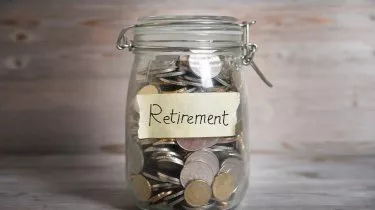Retirement
What is Financial Independence, Retire Early (FIRE) movement?
Do you want to achieve financial independence and retire early? The followers of FIRE movement say it’s achievable.
What is Financial Independence, Retire Early (FIRE) movement?
Do you want to achieve financial independence and retire early? The followers of FIRE movement say it’s achievable.

Want to retire at 30 or 40? Early retirement may seem like a utopian dream, but the growing number of champions of the Financial Independence, Retire Early (FIRE) movement says it is possible.
The FIRE movement, which started in the US, is fast becoming a popular concept among Aussies. It is a type of a financial movement defined by frugality and extreme savings and investment.
Most followers of the movement are Millennials looking to live their lives differently from their parents and grandparents and not to work up to the traditional retirement age of 60. They aim to retire much earlier while they still have good health.
If the FIRE movement sounds interesting to you, read on as we explain how it works and what are its pros and cons.

What is Financial Independence, Retire Early (FIRE) movement?
Financial Independence, Retire Early (FIRE) is about saving and investing while you’re young in order to retire in your 30s or 40s.
The FIRE movement involves adopting an extremely frugal lifestyle, side hustling and saving/investing every single dollar when you are in your 20s and 30s. By making significant sacrifices when you are younger, you will not only be debt-free, but you’ll have enough money that you no longer need to work when you’re in your 30s or 40s. You will ideally be financially independent.
The concept originated from the book Your Money or Your Life by Vicki Robin and Joe Dominguez. The main premise of the book became the core concept of the FIRE movement: every expense is compared to the time spent at work in order to earn the purchase.
In more recent years, Millennials who are looking to change in the way they interact with money have embraced the movement. The movement aims to challenge the status quo of working five days a week for more than 40 years to pay off mortgage and save money and then retire at the age of 60.
How does the FIRE movement work?
Followers of this extreme saving movement often start by dedicating up to 70 per cent of their income to savings while they are still in the workforce.
After their savings reach approximately 30 times of their annual living expenses (the magic amount often referred to is $1 million), they can choose to quit their full-time day jobs and take on a part-time job or to completely retire from any form of employment.
Proponents of the FIRE movement then recommend investing into low-risk but strong yield investments in order to live off the passive income before super would kick in. It would also give them a significant financial buffer for future economic recessions or emergencies that may affect their personal finances.
To cover their living expenses after retiring at a young age, followers of the movement make small withdrawals from their savings. The safe withdrawal rate recommended is typically around 3 per cent to 4 per cent yearly.
Here are the basics of the FIRE movement:
- Change your lifestyle to live frugally
If you are dead set on retiring early, think about your current lifestyle and decide if you are willing to live a very different lifestyle to achieve it.
Unlike other retirement plans, FIRE is more than just setting a budget and missing out on a few luxuries. To be successful at the FIRE movement, you must be prepared to cut out the following:
- Hobbies that require costly equipment
- Overseas holidays
- Going out or dining out multiple times a week
- Branded, expensive clothes
- Cafe breakfasts
Does it mean you can’t have nice things and you need to live under a bridge to follow FIRE? No. However, the significant savings needed to follow through with the plan will require you to make sacrifices. For most people, the FIRE movement can both mean a radical lifestyle change and a long-term financial plan.
If this feels too extreme for your taste, then FIRE probably isn’t the way to go with your retirement. But if it sounds like a challenge and you are already keen on living minimalistically, then FIRE might be your path to financial freedom.
- Pay off your debts
Any debt you have will slow down your journey to financial independence and early retirement. The FIRE movement views any unpaid debt as excess baggage that you need to get rid of as soon as you can.
Proponents of the movement say debts such as credit cards, personal loans, home loans and other debts with high interest rates must be paid off as soon as possible. You can choose to do the avalanche method, which entails paying off the debts with the highest interest rate first.
Some ways to manage your debt include debt consolidation, refinancing your mortgage, or combining it all on a balance transfer credit card.
Estimate how much money you can live on each year (and stick to it!)
It’s hard to calculate the exact amount on how much you spend each year, but many FIRE followers aim to save or invest at least 50 per cent of their income each year. This means you need to keep your annual living expenses below this threshold.
For example, if your take-home income for the year is $100,000 and you want to save 70 per cent of your income (and live off the rest), you’d need to make sure your annual living expenses are below $30,000.
Once you determine how much money you can live off each year, you run the numbers to see how you'll need to save for retirement using the 4 per cent theory.
The 4 per cent rule is a simple formula for figuring out how much you’ll need to have saved to achieve financial independence.
This rule assumes that the money you’ve saved is invested properly in a healthy mix of low-cost securities and other assets and it will grow in value by around 7 per cent each year (based on the past performance of the global stock markets).
Factoring in the standard inflation rate of 3 per cent, this strategy assumes your real rate of return will be around 4 per cent a year.
So, in theory, if you have enough saved and invested to live off the 4 per cent returns each year, your initial investment will last you a lifetime.
- Create a detailed budget and reduce spending
Once you’ve estimated how much you can realistically live off each year and how much you will need to have saved, you need to create a detailed budget.
To attain FIRE, you need to save as much of your income as possible while also whittling your expenses to the absolute bare minimum.
For starters, you can evaluate your personal finances over the last 12 months. List down everything from rent, bills and healthcare to eating out and entertainment (yes, including your Netflix subscription).
By doing this, you can easily spot where you can reduce your expenses and save more and what lifestyle changes you can make. This can be the foundation for your new budget.
- Boost your income
Having more money in the bank means a faster journey towards financial freedom. Therefore, it’s important to increase your income.
Some of the basic tips to increase your income are:
- Ask for a pay rise.
- Get a better-paying job.
- Get a side hustle.
- Rent out your property and assets.
Is the FIRE movement realistic?
After reading all the steps you need to take to achieve FIRE, is it a realistic financial end goal?
FIRE might be great in theory, but achieving it is no easy feat and can be unsustainable in the long-term if not properly planned and if you lack the discipline to follow through.
Because of the strict financial regimen involved in this movement, inevitably you will also miss out on a lot of things people in their 20s and 30s consider not only fun but meaningful or life-changing experiences.
Additionally, stopping work suddenly poses a barrage of mental health risks. Some people are afraid of the notion of stopping work altogether at such an early age.
The FIRE movement isn’t for everyone. If it isn’t for you, it would be tragic to spend years living very carefully only to find you’ve missed out on what really matters to you.

Retirement Planning
Majority of Australians still unsure about their retirement prospects
A recent survey conducted by MFS Investment Management® has shed light on the ongoing uncertainty faced by many Australians regarding their retirement plans. Despite a slight increase in confidence ...Read more

Retirement Planning
Wage growth steadies as businesses navigate economic challenges
In a sign that the Australian labour market may be finding equilibrium, wage growth has stabilised this quarter, according to Employment Hero's latest data. This development comes as employers ...Read more

Retirement Planning
Simplified retirement advice: Key to overcoming behavioural biases, experts say
In a bid to enhance retirement outcomes for Australians, a recent whitepaper by Industry Fund Services, in collaboration with Challenger, has highlighted the importance of simplifying retirement ...Read more

Retirement Planning
Rest launches Retire Ready digital experience to empower members approaching retirement
Rest, one of Australia’s largest profit-to-member superannuation funds, has unveiled a new digital experience aimed at making retirement preparation simpler and more personalised for its members. Read more

Retirement Planning
New Framework Aims to Bridge Australia’s Financial Advice Gap
A ground-breaking framework introduced by the Actuaries Institute promises to revolutionise how Australians access financial support, potentially transforming the financial wellbeing of millionsRead more

Retirement Planning
The downsizer dividend: how Australia’s ageing shift will reshape property, finance and AI strategy
Downsizing is moving from a personal milestone to a system-level lever for Australia’s housing market. As policymakers court reforms and agents eye fresh listings, the real profit pools will accrue to ...Read more

Retirement Planning
Half of Australians financially insecure about retirement as AMP launches new initiative
In a significant move aimed at addressing the retirement concerns of Australians, AMP has unveiled the Retirement Confidence Pulse, a national barometer designed to gauge the financial confidence of ...Read more

Retirement Planning
North introduces Grow to expand Australia's financial advice footprint
In a bid to bridge the gap between the demand for financial advice and its accessibility, North, a prominent platform for superannuation and retirement in Australia, has launched an innovative ...Read more

Retirement Planning
Majority of Australians still unsure about their retirement prospects
A recent survey conducted by MFS Investment Management® has shed light on the ongoing uncertainty faced by many Australians regarding their retirement plans. Despite a slight increase in confidence ...Read more

Retirement Planning
Wage growth steadies as businesses navigate economic challenges
In a sign that the Australian labour market may be finding equilibrium, wage growth has stabilised this quarter, according to Employment Hero's latest data. This development comes as employers ...Read more

Retirement Planning
Simplified retirement advice: Key to overcoming behavioural biases, experts say
In a bid to enhance retirement outcomes for Australians, a recent whitepaper by Industry Fund Services, in collaboration with Challenger, has highlighted the importance of simplifying retirement ...Read more

Retirement Planning
Rest launches Retire Ready digital experience to empower members approaching retirement
Rest, one of Australia’s largest profit-to-member superannuation funds, has unveiled a new digital experience aimed at making retirement preparation simpler and more personalised for its members. Read more

Retirement Planning
New Framework Aims to Bridge Australia’s Financial Advice Gap
A ground-breaking framework introduced by the Actuaries Institute promises to revolutionise how Australians access financial support, potentially transforming the financial wellbeing of millionsRead more

Retirement Planning
The downsizer dividend: how Australia’s ageing shift will reshape property, finance and AI strategy
Downsizing is moving from a personal milestone to a system-level lever for Australia’s housing market. As policymakers court reforms and agents eye fresh listings, the real profit pools will accrue to ...Read more

Retirement Planning
Half of Australians financially insecure about retirement as AMP launches new initiative
In a significant move aimed at addressing the retirement concerns of Australians, AMP has unveiled the Retirement Confidence Pulse, a national barometer designed to gauge the financial confidence of ...Read more

Retirement Planning
North introduces Grow to expand Australia's financial advice footprint
In a bid to bridge the gap between the demand for financial advice and its accessibility, North, a prominent platform for superannuation and retirement in Australia, has launched an innovative ...Read more








